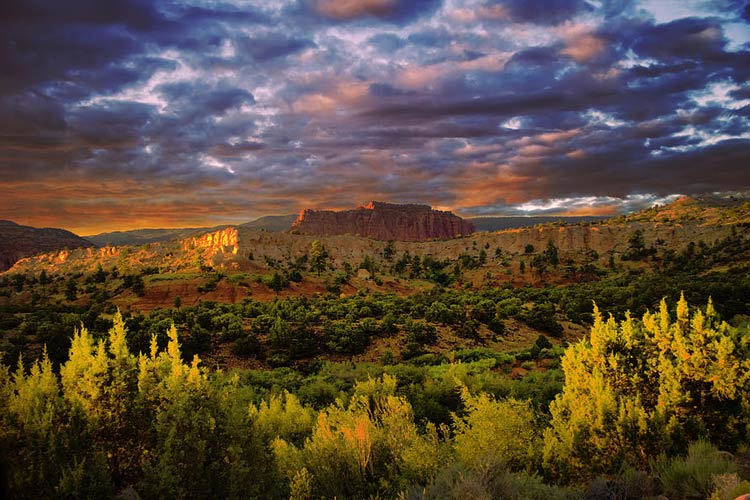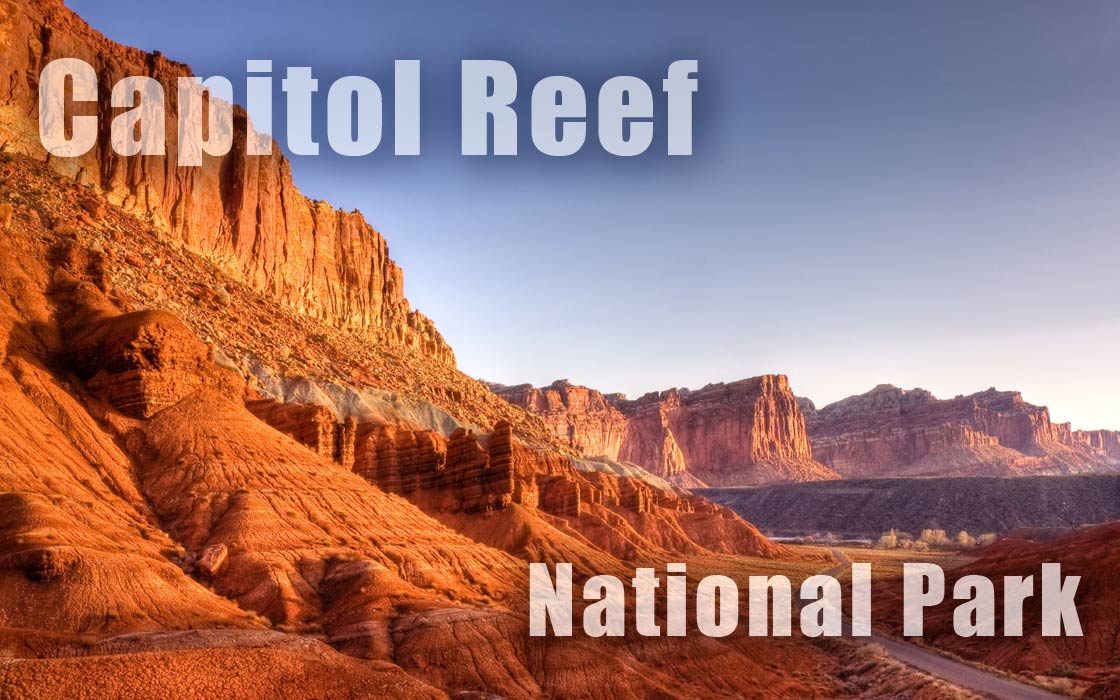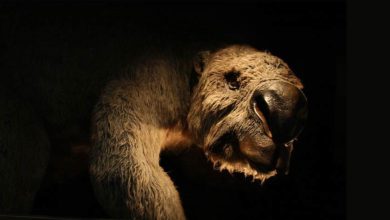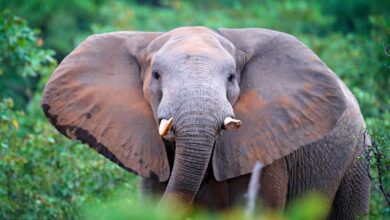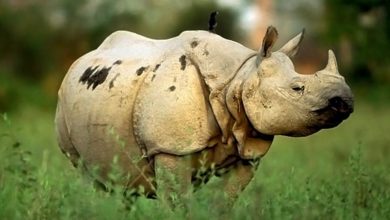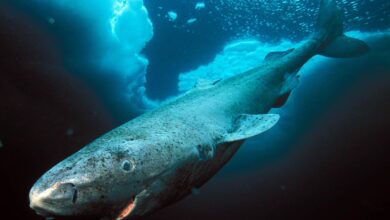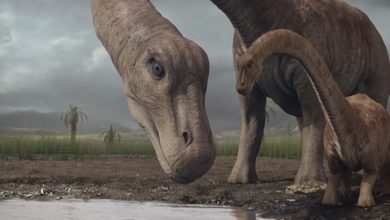Capitol Reef National Park
A Journey Through Capitol Reef’s Red-Rock Wilderness
Capitol Reef National Park is a geological wonderland that promises adventure and awe-inspiring natural beauty. From its towering sandstone cliffs and twisting canyons, to its rolling deserts and historic sites, Capitol Reef is a breathtaking destination that leaves visitors in awe. Whether you’re a hiker, a historian, or simply a lover of the great outdoors, Capitol Reef is the perfect place to experience the raw power and majesty of the American West. So pack your bags, grab your hiking boots, and prepare to embark on a journey of discovery through this magnificent national park.
Location
Capitol Reef National Park is located in south-central Utah, USA. Its exact coordinates are 38.20°N, 111.17°W. The park covers an area of 241,904 acres (978.95 km2) stretching along the Waterpocket Fold, a nearly 100-mile (160 km) long wrinkle in the earth’s crust.
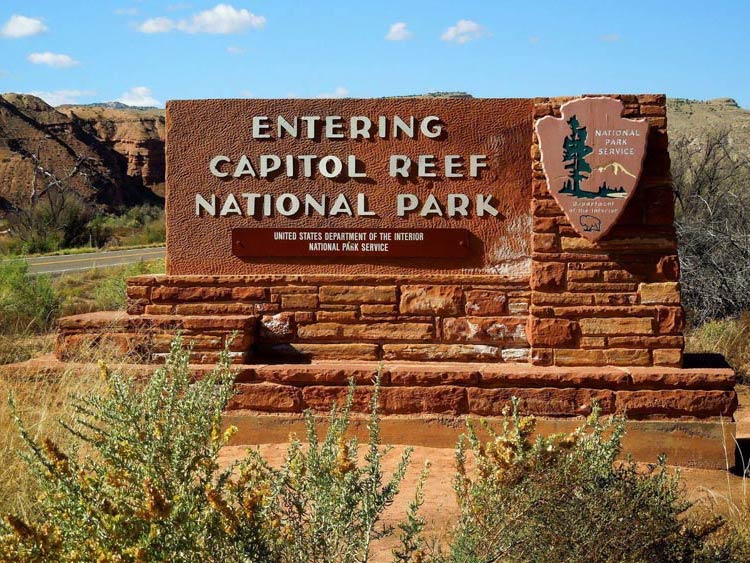
Basic Facts About Capitol Reef National Park
- Established: December 18, 1971
- Location: South-central Utah, USA
- Coordinates: 38.20°N, 111.17°W
- Area: 241,904 acres (978.95 km²)
- Elevation: from 1,182 m (3,877 feet) to 2,731 m (8,960 feet)
- Climate: Semi-arid desert with hot summers and cold winters
- Visitors in 2022: 1,227,608
Capitol Reef is a protected area that is known for its unique geology, including the Waterpocket Fold, a 100-mile (160 km) long wrinkle in the earth’s crust, and its vibrant array of plants and animals. The park also offers a rich cultural history, with evidence of Native American habitation and early pioneer settlements. Visitors can enjoy a wide range of outdoor recreational activities, including hiking, camping, and scenic drives.
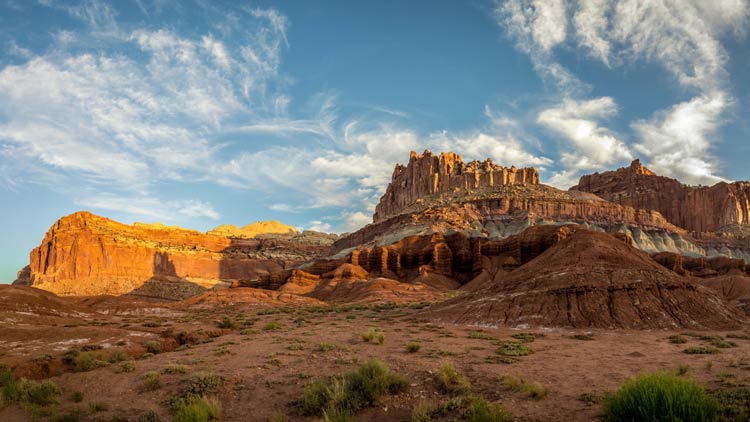
History and name of the Park
Capitol Reef National Park is named after the Capitol Dome, a white Navajo Sandstone formation that resembles the dome of a building, and the nearby Reef, a series of rocky cliffs. The park’s unique geology has been known for centuries by the Native Americans who lived in the area, but it was not until the early 20th century that the first non-Native Americans explored the region.
The area was initially settled by Mormon pioneers in the late 19th century and was later declared a national monument in 1937. In 1971, Capitol Reef National Monument was upgraded to a national park, preserving the area’s natural beauty and cultural heritage for future generations.
Today, Capitol Reef National Park is a popular tourist destination that attracts visitors from around the world to experience its breathtaking landscape, rich cultural history, and diverse array of recreational opportunities. Whether you’re a geology buff, a history enthusiast, or just looking for a peaceful escape into nature, Capitol Reef National Park is the perfect place to explore and discover the unique beauty of the American West.
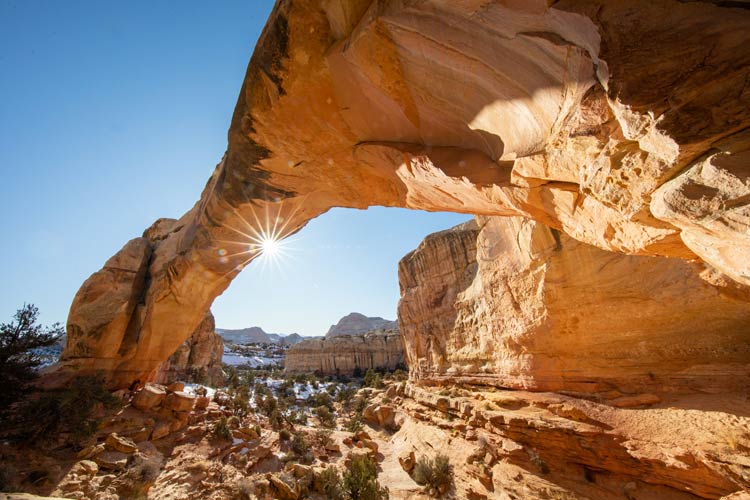
Geography of the park
Capitol Reef National Park is located in south-central Utah and covers an area of 241,904 acres (978.95 km²). The park is situated along the Waterpocket Fold, a 100-mile (160 km) long wrinkle in the earth’s crust that extends from Thousand Lake Mountain in the north to the Fremont River in the south.
The park is known for its unique geology, including towering sandstone cliffs, twisting canyons, and rolling deserts. The Capitol Reef area is composed mainly of Navajo Sandstone, which was formed from sand dunes in the Jurassic Period and later exposed by erosion.
In addition to its geological wonders, Capitol Reef National Park also boasts a diverse range of plant and animal life, from towering pinyon pines and junipers to desert bighorn sheep and chuckwalla lizards. The park’s rolling desert landscapes are dotted with wetlands and riparian areas, providing important habitats for a wide range of wildlife species.
Visitors to Capitol Reef National Park can explore its diverse landscapes through a variety of recreational activities, including hiking, camping, and scenic drives. With its breathtaking natural beauty and rich cultural heritage, Capitol Reef National Park is a must-visit destination for anyone looking to experience the rugged beauty of the American West.
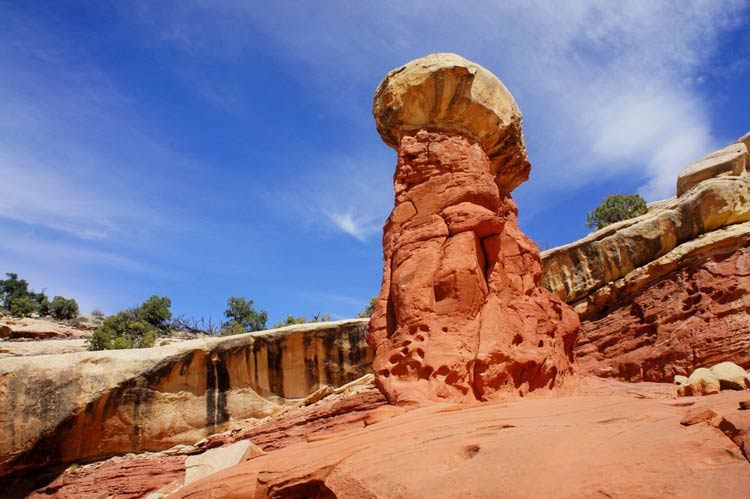
Features of the park
Capitol Reef National Park boasts a wide range of natural and cultural features that make it a unique and fascinating destination. Some of the park’s key features include:
- Waterpocket Fold
A 100-mile (160 km) long wrinkle in the earth’s crust that extends from Thousand Lake Mountain to the Fremont River. - Navajo Sandstone
The primary rock layer in the park was formed from sand dunes in the Jurassic Period and was later exposed by erosion. - Capitol Dome
A white Navajo Sandstone formation that resembles the dome of a building and is one of the park’s most recognizable landmarks. - Fruita Historic District
A well-preserved 19th-century pioneer settlement that offers a glimpse into the lives of early settlers in the area. - Scenic Drives
Including the scenic drive along State Route 24, which provides breathtaking views of the park’s landscape and geological wonders. - Hiking
With a range of trails that traverse the park’s canyons, mesas, and deserts, offering visitors the chance to explore its unique landscapes up close.

Geology of the park and surrounding areas
The geology of Capitol Reef National Park and the surrounding areas is dominated by the Waterpocket Fold, a nearly 100-mile (160 km) long wrinkle in the earth’s crust that extends from Thousand Lake Mountain in the north to the Fremont River in the south. The fold is composed mainly of Navajo Sandstone, which was formed from sand dunes in the Jurassic Period and later exposed by erosion.
The park is also known for its towering sandstone cliffs, twisting canyons, and rolling deserts. The Capitol Reef area is dotted with monoliths, rock formations, and colorful rock layers that tell the story of the area’s geological history. Some of the most notable geological features include the Capitol Dome, a white sandstone dome that resembles the dome of a building; Chimney Rock, a towering spire that rises from the desert floor; and the Temples of the Sun and Moon, two towering rock formations that rise high above the surrounding landscape.
In addition to its geological wonders, Capitol Reef National Park is also surrounded by a diverse range of landscapes, from the snow-capped peaks of the nearby Tushar Mountains to the rolling deserts of the Great Basin. The park’s location at the crossroads of several major geologic provinces makes it a unique and important area for geologists and naturalists alike.
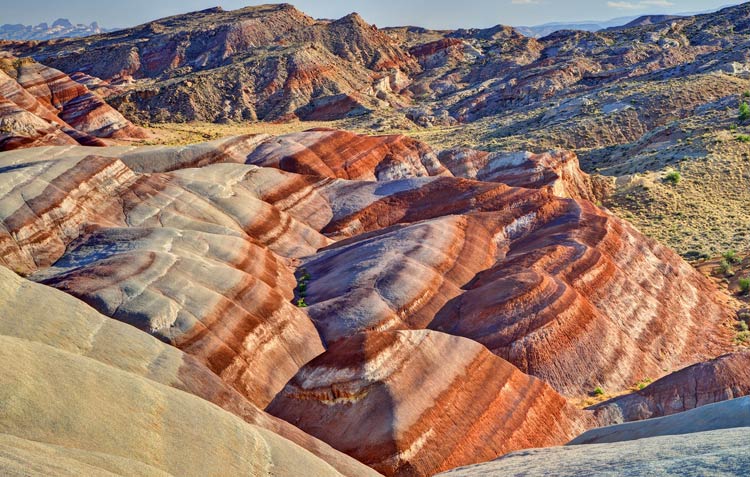
Climate of the park
The climate of Capitol Reef National Park is characterized as a semi-arid desert with hot summers and cold winters. The park’s elevation, which ranges from 5,800 to 8,000 feet (1,768 to 2,438 meters), contributes to its distinct climate patterns.
In the summer months, temperatures can reach upwards of 38°C (100°F), while winter temperatures can drop to below freezing. Rain is rare in the park, with most precipitation falling as snow in the winter months.
Despite its harsh climate, Capitol Reef National Park is home to a diverse range of plant and animal species that have adapted to the unique conditions of the desert. From towering pinyon pines and junipers to desert bighorn sheep and chuckwalla lizards, visitors to the park can witness the incredible resilience and adaptability of life in the desert.
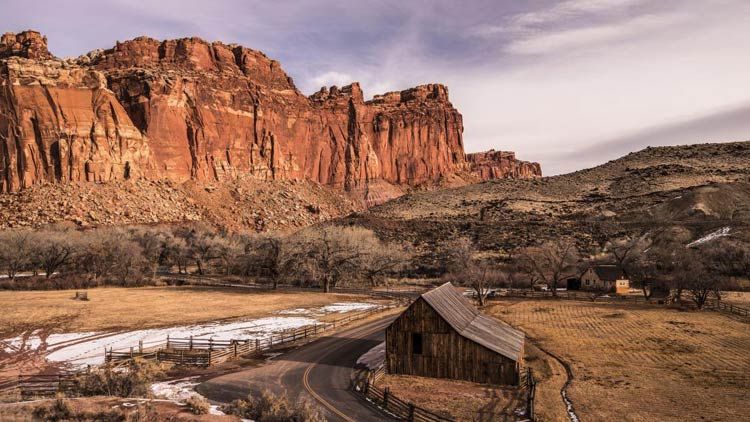
Flora in Capitol Reef National Park
Capitol Reef National Park is home to a diverse range of plant species that have adapted to the harsh conditions of the desert. Despite its semi-arid climate, the park supports a wide variety of vegetation, from towering pinyon pines (Pinus edulis) and junipers (Juniperus spp.) to delicate wildflowers and succulents.
Some of the most notable plant species found in the park include:
- Utah agave (Agave utahensis)
- Beavertail cactus (Opuntia basilaris)
- Indian paintbrush (Castilleja spp.)
- Prickly pear cactus (Opuntia spp.)
- Big sagebrush (Artemisia tridentata)
- Rabbitbrush (Chrysothamnus spp.)
The diversity of plant species in Capitol Reef National Park is a testament to the resilience and adaptability of life in the desert. Whether you’re a botanist, a nature enthusiast, or simply looking to appreciate the beauty of the great outdoors, the park’s rich flora is sure to impress.
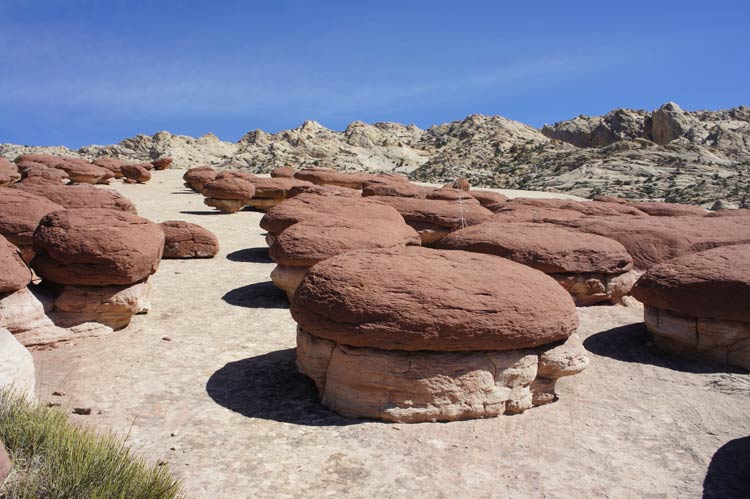
Fauna in Capitol Reef National Park
Capitol Reef National Park is home to a variety of animal species, each adapted to the unique conditions of the desert. Some of the most notable animal species found in the park include:
- Desert bighorn sheep (Ovis canadensis nelsoni)
- Mule deer (Odocoileus hemionus)
- Rock squirrel (Otospermophilus variegatus)
- Coyote (Canis latrans)
- Chuckwalla (Sauromalus ater)
- Golden eagle (Aquila chrysaetos)
- Kit fox (Vulpes macrotis)
The park’s unique geology and varied landscapes provide habitat for a wide range of animal species, from the high-elevation forests of the Tushar Mountains to the rolling deserts of the Great Basin. Whether you’re a wildlife enthusiast, a birdwatcher, or simply looking to appreciate the beauty of the great outdoors, the park’s rich fauna is sure to impress.
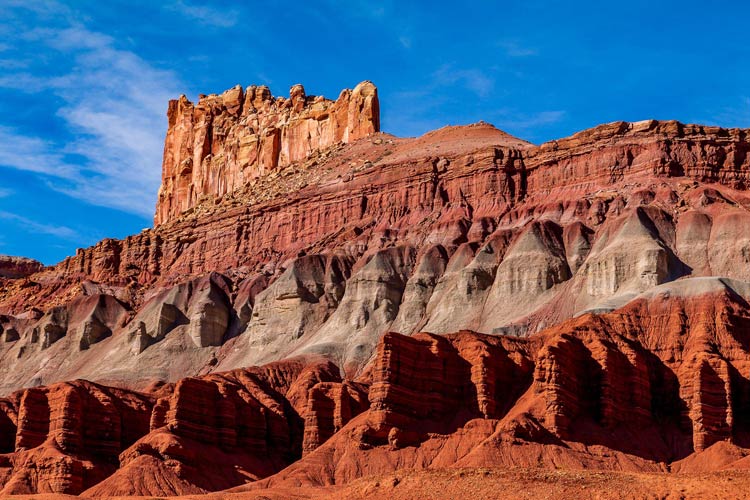
Tourism and tourist main attractions in the park
Capitol Reef National Park is a popular destination for tourists and outdoor enthusiasts, offering a range of recreational opportunities and stunning natural beauty. Some of the main attractions in the park include:
- Scenic Drives
The park offers several scenic drives, including the Capitol Reef Scenic Drive and the Cathedral Valley Scenic Drive, which both offer breathtaking views of the park’s unique landscapes. - Hiking and Backpacking
With over 100 miles (160 km) of trails, Capitol Reef National Park offers a range of hiking and backpacking opportunities for visitors. Some of the most popular trails include the Hickman Bridge Trail, the Grand Wash Trail, and the Cassidy Arch Trail. - Rock Climbing and Bouldering
With its towering sandstone cliffs and monoliths, Capitol Reef National Park is a popular destination for rock climbers and boulderers. The park offers a range of climbing opportunities for visitors, from easy routes for beginners to challenging routes for experienced climbers. - Wildlife Viewing
The park is home to a wide range of wildlife, from desert bighorn sheep and mule deer to golden eagles and chuckwallas. Visitors can explore the park’s unique landscapes and look for wildlife on guided tours or self-led wildlife-watching excursions. - Camping
The park offers several campgrounds, including the Fruita Campground and the Cedar Mesa Campground, which provide visitors with the opportunity to enjoy the park’s natural beauty while camping under the stars.
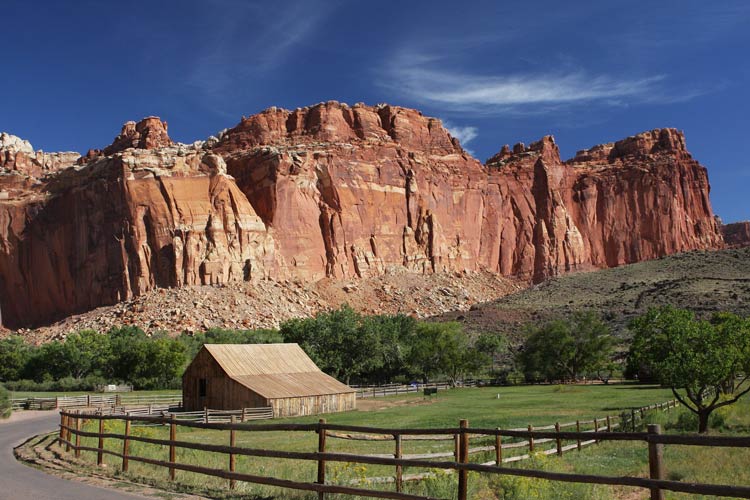
Canyoneering
Canyoneering is a popular activity in Capitol Reef National Park, as the park is home to a diverse range of canyons and slot canyons that offer a range of challenges and experiences for canyoneers.
Canyoneering involves hiking, climbing, and rappelling through canyons, and is a physically demanding activity that requires a high level of fitness and technical skills. Visitors interested in canyoneering in Capitol Reef National Park should be experienced and properly equipped, and should always check with park rangers for the latest information on conditions and safety information.
Some of the popular canyoneering destinations in Capitol Reef National Park include Cassidy Arch, Lower Muley Twist Canyon, and Grand Wash. Each of these canyons offers unique experiences, from scenic overlooks and challenging climbing routes to narrow slots and flowing streams.
It is important to note that canyoneering in Capitol Reef National Park, as well as in other national parks, is a backcountry activity and should only be attempted by experienced and properly equipped individuals. Visitors should always check with park rangers for the latest information on conditions, safety information, and any necessary permits or restrictions.
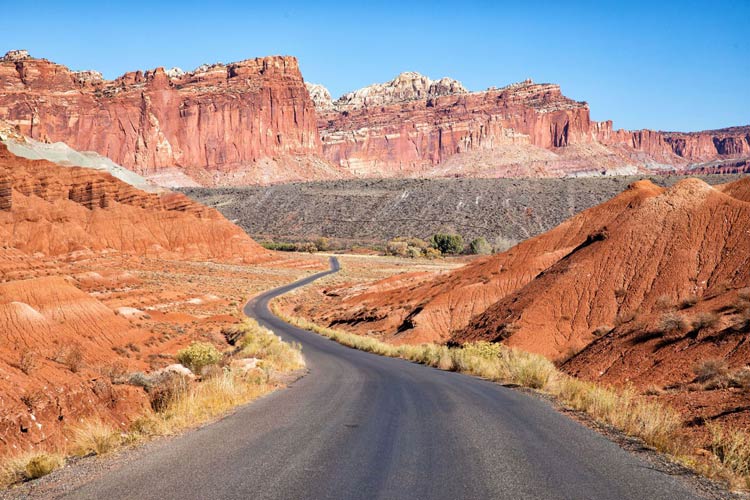
Auto touring
Auto touring is a popular activity in Capitol Reef National Park, as the park is home to a scenic and historic scenic drive that offers visitors the chance to explore the park’s unique landscapes and cultural resources.
The scenic drive through Capitol Reef National Park is known as the Scenic Drive, and it provides access to some of the park’s most popular attractions, including scenic overlooks, hiking trails, and historic structures. The drive is approximately 50 miles (80 km) long, and takes visitors through a diverse range of landscapes, from sandstone cliffs and rock formations to rolling hills and open valleys.
Some of the popular stops along the Scenic Drive include Panorama Point, the Pioneer Register, and the Gifford House Museum. At each of these stops, visitors can learn about the park’s history, geology, and wildlife, as well as enjoy scenic views of the surrounding landscapes.
In addition to the Scenic Drive, there are also several other scenic drives and backcountry roads in Capitol Reef National Park that offer visitors the chance to explore the park’s remote and wild areas. Visitors interested in auto touring in the park should be properly equipped, and should always check with park rangers for the latest information on conditions, safety information, and any necessary permits or restrictions.
Whether you’re an outdoor enthusiast, a nature lover, or simply looking to escape the hustle and bustle of everyday life, Capitol Reef National Park is sure to impress with its stunning natural beauty and unique geological wonders.

How To Reach To Capitol Reef National Park?
Capitol Reef National Park is located in south-central Utah, in the United States. There are several ways to reach the park, including by car, by bus, and by air.
- By Car
The quickest and most convenient way to reach Capitol Reef National Park is by car. The park is located approximately 250 miles (400 km) south of Salt Lake City and 170 miles (274 km) southeast of Las Vegas, Nevada. The park can be reached via several major highways, including US-89, US-50, and US-6. - By Bus
There is no direct bus service to Capitol Reef National Park. However, visitors can take a bus to nearby cities, such as Salt Lake City or Las Vegas, and then rent a car to reach the park. - By Air
The closest major airport to Capitol Reef National Park is Salt Lake City International Airport, located approximately 250 miles (400 km) north of the park. From the airport, visitors can rent a car and drive to the park, or take a bus to nearby cities and then rent a car.
Regardless of the method of transportation, it is recommended that visitors check road and weather conditions before arriving, as conditions can be unpredictable in the southwestern United States.

Best Time To Visit Capitol Reef National Park
The best time to visit Capitol Reef National Park depends on what you are interested in experiencing during your visit. The park offers a range of recreational activities and natural attractions, and the best time to visit may vary depending on your interests.
- Spring (March to May)
This is a great time to visit Capitol Reef National Park if you want to experience the park’s wildflowers in bloom. During this time, the weather is mild and temperatures range from 10-20°C (50-68°F). - Summer (June to August)
This is the peak tourist season in Capitol Reef National Park and the best time to visit if you are interested in outdoor activities, such as hiking and backpacking. Temperatures during this time can be quite hot, with temperatures reaching up to 30-35°C (86-95°F). - Fall (September to November)
This is a great time to visit Capitol Reef National Park if you are interested in experiencing the park’s autumn colors. Temperatures during this time are mild and range from 10-20°C (50-68°F). - Winter (December to February)
Winter is a quieter time to visit Capitol Reef National Park, and is best suited for those who enjoy cooler temperatures and fewer crowds. Temperatures during this time can be quite cold, with temperatures dropping to below freezing.
Regardless of the time of year you visit, it is important to be prepared for changing weather conditions, as the park can experience sudden weather changes. Visitors should always check weather forecasts and pack accordingly.
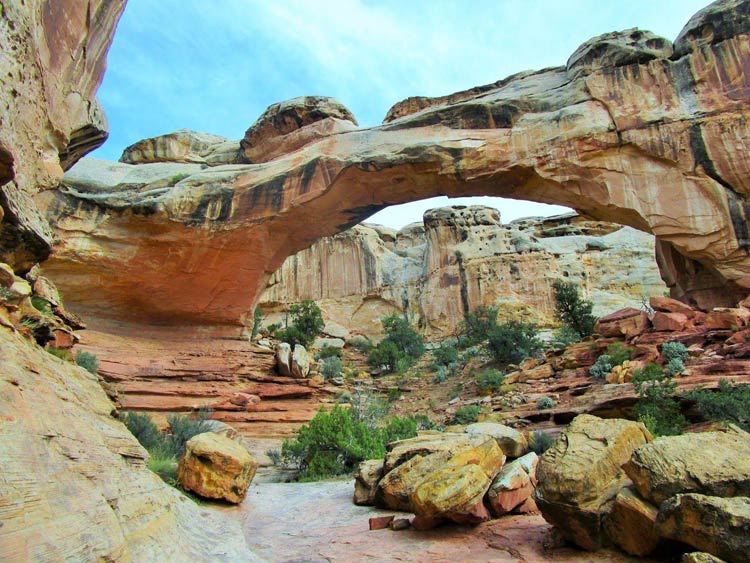
Conservation
Conservation is an important aspect of Capitol Reef National Park, as the park is home to a diverse range of wildlife and plant species, as well as unique geological features. The National Park Service, in partnership with other organizations, works to protect and preserve the park’s natural resources, as well as its cultural and historical resources.
Some of the conservation efforts in the park include:
- Protecting Wildlife
The National Park Service works to protect and preserve the park’s wildlife, including threatened and endangered species. This involves monitoring wildlife populations, controlling invasive species, and managing habitats. - Preserving Natural Resources
The National Park Service works to preserve the park’s natural resources, including its water, soil, and vegetation. This involves monitoring and managing resource use, controlling pollution, and restoring damaged areas. - Maintaining Cultural Resources
The National Park Service works to preserve the park’s cultural resources, including its historic structures, artifacts, and landscapes. This involves restoring and maintaining historic structures, as well as preserving and interpreting cultural resources for visitors. - Educating Visitors
The National Park Service works to educate visitors about the importance of conservation, and to encourage them to become involved in conservation efforts. This involves providing educational programs, such as ranger-led hikes and talks, as well as working with local organizations to promote conservation.
The National Park Service’s conservation efforts help to protect the unique and diverse resources of Capitol Reef National Park, and ensure that they are available for future generations to enjoy.
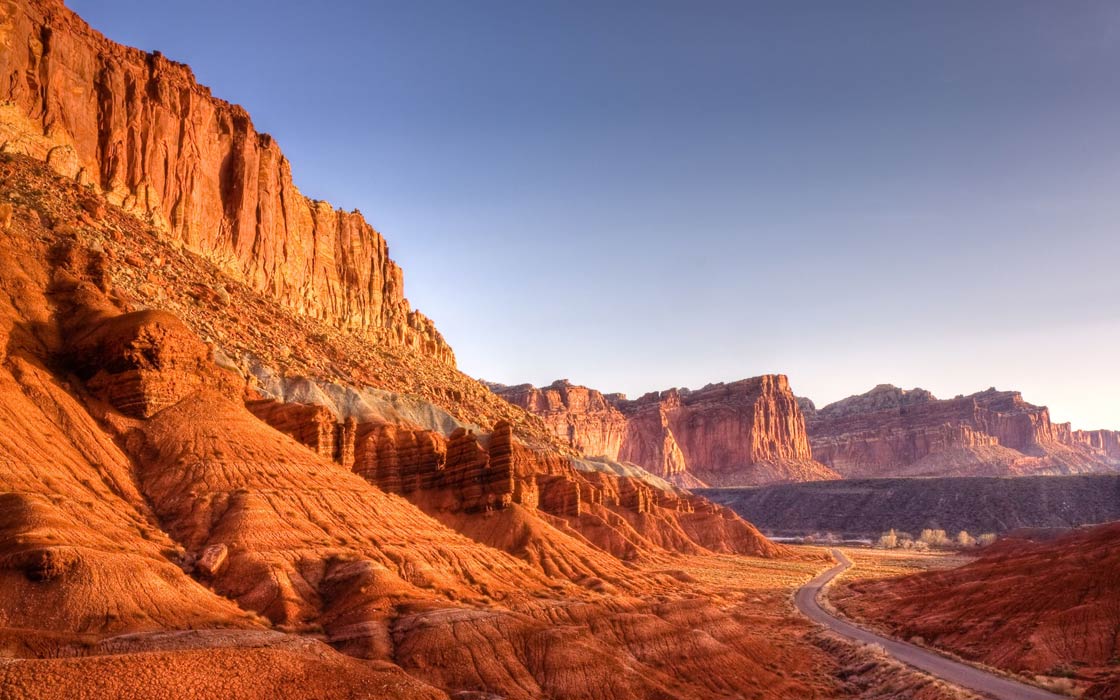
Capitol Reef National Park in numbers
- Acreage: 241,904 acres (978.95 km2)
- Visitation: Approximately 1.2 million visitors per year
- Length of Scenic Drives: Over 60 miles (96.5 km) of scenic drives through the park
- Number of Hiking Trails: Over 100 miles (160 km) of hiking trails
- Number of Campgrounds: 2 developed campgrounds and several backcountry campsites
- Elevation:
- Capitol Reef’s lowest point is 1,182 m (3,877 feet) at Hall’s Creek
- The highest point in Capitol Reef is 2,731 m (8,960 feet) near Billings Pass
- Average Temperatures: Winter temperatures range from 3.9°C (39°F) to 16.7°C (62°F), while summer temperatures range from 20.6°C (69°F) to 32.2°C (90°F)
These statistics give a sense of the size and popularity of Capitol Reef National Park and help to illustrate why it is such a beloved destination for visitors from around the world. Whether you’re an outdoor enthusiast, a nature lover, or simply looking to escape the hustle and bustle of everyday life, Capitol Reef National Park is sure to impress with its stunning natural beauty and unique geological wonders.
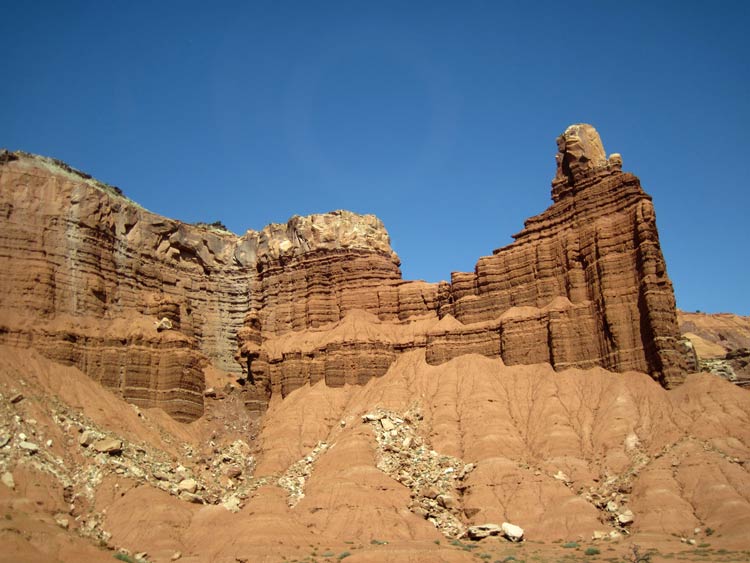
Interesting facts about Capitol Reef National Park
- Named after a geological feature
The park gets its name from the “reef” of white Navajo sandstone that runs through the center of the park, resembling a capitol building from a distance. - Home to the Fruita Historic District
The Fruita Historic District is a 19th-century orchard that was established by early settlers in the area. Today, visitors can still pick fruit from the historic orchard, including apples, pears, peaches, and cherries. - Rich Native American history
Capitol Reef National Park is located in the heart of the Native American cultural area known as the “Land of the Anasazi.” The park is home to several ancient Native American petroglyphs, including the Barrier Canyon style rock art. - World-renowned geology
The park’s unique geology, including the Waterpocket Fold, a massive uplift of rock that formed over 65 million years ago, makes it a popular destination for geologists and amateur rockhounds alike. - The Old Spanish Trail
The Old Spanish Trail, a trade route that connected Santa Fe, New Mexico to California, passed through the park, providing a window into the region’s rich history. - A biodiversity hotspot
The park is home to a wide variety of plant and animal species, including several species of cacti and wildflowers that are found nowhere else in the world.
Whether you’re interested in history, geology, or the natural world, Capitol Reef National Park offers something for everyone. With its unique landscapes, rich cultural history, and stunning natural beauty, it’s no wonder that this park is one of the most beloved destinations in the National Park System.

Q&A (questions and answers) about Capitol Reef National Park
Q: What is Capitol Reef National Park?
A: Capitol Reef National Park is a protected area located in the southwestern United States in Utah. It was established as a National Park in 1971 and covers an area of 241,904 acres. The park is known for its unique geology, including the Waterpocket Fold, a massive uplift of rock that formed over 65 million years ago, and its stunning natural beauty, including canyons, cliffs, and rock formations.
Q: Where is Capitol Reef National Park located?
A: Capitol Reef National Park is located in south-central Utah, in the United States. It is approximately 250 miles (400 km) south of Salt Lake City and 170 miles (274 km) southeast of Las Vegas, Nevada.
Q: What is the main attraction of Capitol Reef National Park?
A: The main attraction of Capitol Reef National Park is its unique geology and stunning natural beauty. The park is home to several geological wonders, including the Waterpocket Fold, a massive uplift of rock that formed over 65 million years ago, and several impressive rock formations, such as the Hickman Bridge and Chimney Rock. In addition, the park is home to a wide variety of plant and animal species, making it a popular destination for nature lovers.
Q: What activities can visitors enjoy in Capitol Reef National Park?
A: Visitors to Capitol Reef National Park can enjoy a wide range of activities, including hiking, camping, scenic drives, wildlife viewing, and rock climbing. The park also offers several ranger-led programs and guided tours, providing visitors with an opportunity to learn more about the park’s history and natural wonders.
Q: Is it possible to camp in Capitol Reef National Park?
A: Yes, camping is possible in Capitol Reef National Park. The park has two developed campgrounds and several backcountry campsites, providing visitors with a range of options for camping and enjoying the park’s natural beauty.
Q: What is the average temperature in Capitol Reef National Park?
A: The average temperature in Capitol Reef National Park varies depending on the time of year. During the winter, temperatures range from 3.9°C (39°F) to 16.7°C (62°F), while during the summer, temperatures range from 20.6°C (69°F) to 32.2°C (90°F).
Q: What is the best time to visit Capitol Reef National Park?
A: The best time to visit Capitol Reef National Park varies depending on what you’re looking to experience. If you’re interested in hiking, the best time to visit is in the spring or fall, when temperatures are mild and the scenery is at its best. If you’re interested in wildlife viewing, the best time to visit is in the summer, when the park’s many plant and animal species are most active.
